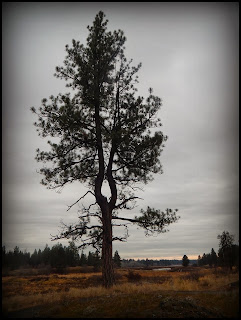And so did we.
Each season provides a distinctly different experience. Autumn is a time of strong contrasts of color, temperatures and textures.
Even now as leaves have already begun to fall, the colors vary in subtle hues awaiting the crisp days of winter that are on the horizon.
This day we will go in search of the Trumpeter Swans that call this refuge home.

Each season provides a distinctly different experience. Autumn is a time of strong contrasts of color, temperatures and textures.
Even now as leaves have already begun to fall, the colors vary in subtle hues awaiting the crisp days of winter that are on the horizon.
This day we will go in search of the Trumpeter Swans that call this refuge home.
Turnbull National Wildlife Refuge was established in 1937 by an Executive Order of President Franklin D. Roosevelt.
The Refuge is located in an area of Eastern Washington on the Eastern edge of the Columbia River Basin, known as the Channeled Scablands. This vast and varied terrain supports an unusal pattern of wetlands, rock, ponderosa pine and aspen forests, and grassland. The refuge includes deep permanent sloughs, semi-permanent potholes, and seasonal wetlands. The variation of landscape provides important habitat for migrating and breeding waterfowl and other water birds and animals.
Lanky aspens stand guard providing a stark silhouette in the fall landscape framing the lake.
The quiet bogs and still waters provide food for the waterfoul.
The only sounds are the ducks quacking and occasionally Canadian Geese flying overhead.
The only sounds are the ducks quacking and occasionally Canadian Geese flying overhead.
A lone pine provides a stark silhouette in the afternoon sky
When a tree falls in our human world, we clean it up and remove the debris. In the animal and bird world, the fallen tree provides a continuation of the habitat in a new form as a home to insects and birds.
There are reflections everywhere we look.
We hiked several trails.... More remain for other days
Early settlers found this rich and fertile ground for farming . They dug trenches to run the water out of the ponds and tilled the soil. Eventually the nutrients ran off the soil leaving little yields and the farmers abandoned the land leaving it damaged for the widlife that had lived here for thousands of years.
In the years since the land has become a National Refuge, work has been done to begin restoring the refuge
and return the area to again provide a natural habitat for waterfoul and wildlife without human encroachment.
This year they rebuilt a failed earthen damn that will allow the area behind this barrier to refill with water.
We searched and searched but found no Trumpeter swans.
Our challenge and task remains before us.
But for today it was beginning to look like the only wildlife we would find......
was Hailey.
But it had been a good day and we started home
And then we saw......
a car on the side of the road with a camera pointing out the window at a meadow.
Or course we pulled over to see what there was to see.
We were close enough to hear the elk bugling to one another.
The herd of approximately 16 elk was at the limit of my zoom lense so the quality is not what I would have liked but we stayed and watched them grazing in the evening light, wild and free.
The hoot of owl bids us farewell.
A good day indeed.


















This is a beautiful post with gorgeous pictures about what seems like a nearly perfect day and a pull to return for the trumpeter swans. I felt relaxed and happy just reading it. What a lovely fall day in such a wonderful place. SO glad I could see it through your eyes.
ReplyDeleteBeautiful country - and such a great description - makes me wish I could be there.
ReplyDeleteThat certainly IS a good day. Wonderful pictures and words.
ReplyDelete